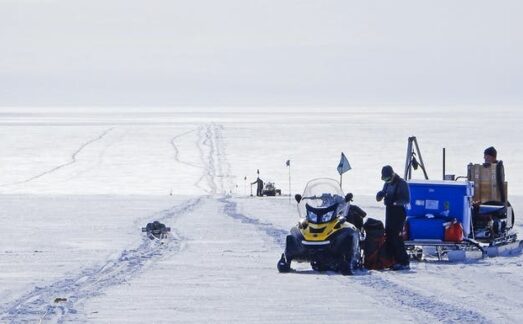Glacial retreat
Marine-based ice sheets did not advance across the continental shelf during the early Pliocene (5.3 – 2.6 million years ago).
Determine the extent of glacial retreat and marine incursion into West Antarctica during the Pliocene (the last time atmospheric CO2 levels exceeded 400 ppm and global mean temperatures were a few degrees warmer than pre-industrial).
By 2100, projected atmospheric CO2 concentrations will range from 430 to >1000 ppm depending upon future emission scenarios. Proxy-based pCO2 reconstructions suggest the Pliocene was the last time atmospheric CO2 levels exceeded 400 ppm and global mean temperatures were a few degrees warmer than pre-industrial. Pliocene WAIS was highly sensitive and responded dynamically when global mean surface temperatures exceeded 2°C, but the extent of glacial retreat and marine incursion into West Antarctica is unknown. WAIS variability during Pliocene time could be represented at the SWAIS 2C drill sites by extended periods of open marine conditions or by evidence of astronomically paced local ice advance and retreat. The sediment core record combined with reconstructions of sea surface temperatures and sea ice will help constrain the sensitivity of WAIS during a 400ppm atmospheric CO2 world.
Key Questions
Was Early Pliocene climate sufficiently warm for open marine conditions to persist along the Siple Coast region throughout glacial and interglacial cycles?
Were marine ice sheets able to re-advance across West Antarctica and the Ross Sea during glacial episodes in response to a CO2 decrease and climatic cooling at ~ 3.3 Ma?
How did the WAIS respond to astronomical forcing threshold at 3.3 Ma?
Did the WAIS collapse during every mid-Pliocene interglacial episode, but if not, why not?


Workshop Report: Sensitivity of the West Antarctic Ice Sheet to +2 °C (SWAIS 2C)
The Sensitivity of the West Antarctic Ice Sheet to a Warming of 2 ∘C (SWAIS 2C) Project aims to understand past and current drivers and thresholds of WAIS dynamics...
Read more
